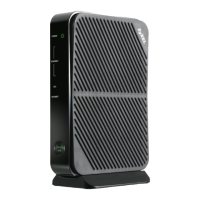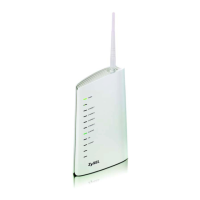P-792H v2 User’s Guide
235
CHAPTER 18
Universal Plug-and-Play (UPnP)
18.1 Overview
Universal Plug and Play (UPnP) is a distributed, open networking standard that
uses TCP/IP for simple peer-to-peer network connectivity between devices. A
UPnP device can dynamically join a network, obtain an IP address, convey its
capabilities and learn about other devices on the network. In turn, a device can
leave a network smoothly and automatically when it is no longer in use.
18.1.1 What You Can Do in the UPnP Screen
Use the UPnP screen (Section 18.2 on page 237) to enable UPnP on the P-792H
v2 and allow UPnP-enabled applications to automatically configure the P-792H v2.
18.1.2 What You Need to Know About UPnP
Identifying UPnP Devices
UPnP hardware is identified as an icon in the Network Connections folder
(Windows XP). Each UPnP compatible device installed on your network will appear
as a separate icon. Selecting the icon of a UPnP device will allow you to access the
information and properties of that device.
NAT Traversal
UPnP NAT traversal automates the process of allowing an application to operate
through NAT. UPnP network devices can automatically configure network
addressing, announce their presence in the network to other UPnP devices and
enable exchange of simple product and service descriptions. NAT traversal allows
the following:
• Dynamic port mapping
• Learning public IP addresses
• Assigning lease times to mappings

